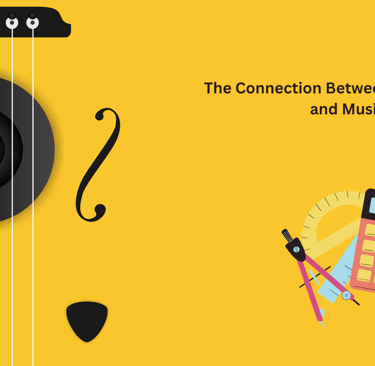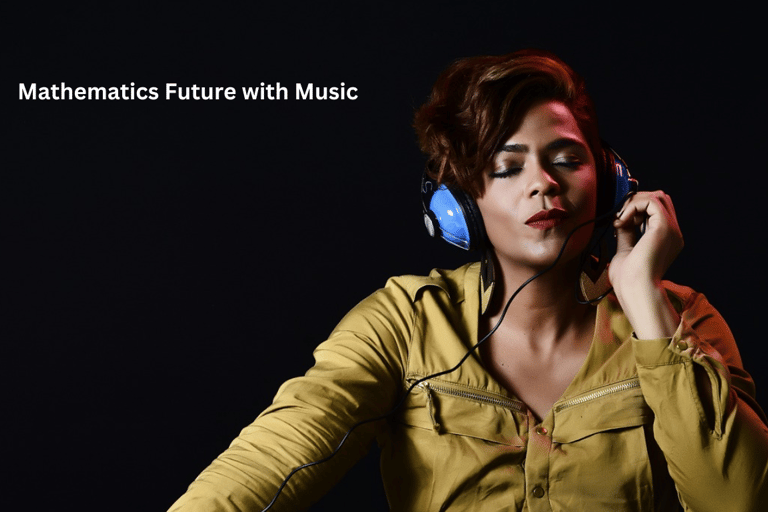The Connection Between Mathematics and Music Books That Explain the Link
1/15/20255 min read


The Connection Between Mathematics and Music: Books That Explain the Link
Introduction
Music and mathematics, two subjects that seem so unrelated, are connected wonderfully and intricately. While music evokes emotions, mathematics pleases logic. However, the connection between these two disciplines has always interested scholars and artists for centuries. Rhythmic patterns to harmonic frequencies are all a structure of mathematics hidden behind music. In this paper, we will explore this interesting bond and find books that explain the bond between mathematics and music, bringing it to the attention of educators, students, and fans.
The Mathematical Structure of Music
Quantifying with Numbers
Music is mathematical. Each melody, harmony, and rhythm can be reduced to numerical relationships. For example:
•Rhythm: Patterns of beats can be represented in fractions and time.
• Pitch: In the musical term, the ratio forms the term that denotes mathematical values for different notes.
• Scales: General Western convention uses 12-tone equal temperament. It involves the division and basis on log terms.
Therefore, all such mathematical backgrounds equip a composer to compose meaningful, organized music.
The story of Pythagoras as regards musical ratio birth
Mathematics and music have been related since ancient Greece. Pythagoras discovered that strings vibrating in simple ratios like 2:1 or 3:2 produced harmonious sounds. This discovery gave birth to Western musical scales and led to centuries of further discovery of the mathematical nature of music.
Patterns and Symmetry in Music
The Role of Geometry in Composition
Geometry is very core to musical composing. Visual patterns could form a guide towards melodic and harmonic creations. There are examples, for instance, of work done by the composer Johann Sebastian Bach, where this kind of organizational structure was conducted using symmetrical structures. Nowadays, software tools composed of new types of music use geometrical models.
Fractals in Music
Natural forms are fractals that occur in nature; they have recently been discovered in music. Consider, for example, Bach's The Art of Fugue, where forms repeat at various scales to create shapes fractals. Coherence is there, but with it, complexity.
Rhythm Described by Mathematics
Time Signatures as Mathematical Detail
Rhythm in music is actually very dependent on mathematical concepts. For instance, if the time signature is 4/4 or 3/4, that already determines how many counts must be included within a measure, as the beats would be counted. The performers would not make a wrong count because, of course, they know the fractions and division.
One example of rather complex mathematical calculations in the generation of the rhythm is the polyrhythms.
Algorithmic Generation of Rhythms
Using algorithms with modern electronic music, the rhythms created are sophisticated in their complexity. Models that come from mathematical operations will give a set of beats that can be a simple loop or intricate patterns that open wide doors in creating a field for artists to work within.
Harmonics and Frequency
From a Mathematical Perspective
Exploring Harmonic Frequencies
The science of harmonics is a perfect example of how mathematics and music can work together. A sound wave vibrating at integer multiples of its fundamental frequency produces harmonics. These relationships produce pleasing overtones that form the body of an instrument's timbre.
Equal Temperament and Logarithms
The modern scale of music based on equal temperament, dividing the octaves into 12 steps, means logarithm applies with such power that all intervals become equal; otherwise, any other interval ratio will discompose a form it might have when made.
Best books demonstrating where maths meets music.
Top Recommendation on how to get going with
To a newcomer to the topic, the introduction texts are soft, humble guides for learning. The texts entail:
• Music by the Numbers by Eli Maor: this book elaborates on how math is the base for musical scales, rhythms, and harmonics.
More Serious Reads for Enthusiasts
For a reader with a desire to peruse a bit deeper into the subject, then the following reads are absolute reads :
• "The Geometry of Music" by Dmitri Tymoczko presents a geometrical perspective on music harmony and voice leading.
• "Mathematics and Music" by David Wright: This book is very comprehensive because the student will discuss wave theory, Fourier analysis, and the physics of sound.
Books for Teachers and Students
Any textbook that can teach by doing is good for the teaching staff and students to use. There are those categorized into these below:
• "Mathematics and Modern Music" by Sherman Stein. To the instructor, this will provide the idea to teach by making it appealing via music.
• "Math and Music: Harmonious Connections" by Trudi Hammel Garland. Activity book which traces the link between mathematics and music.
Mathematics Applied to Music
Tuning Systems and Frequency Ratios
Mathematics is used extensively in the development of tuning systems. Older tuning systems, like just intonation, were based on pure ratios; equal temperament allows instruments to be played in any key, greatly increasing the scope for creativity. However, these systems can only be fully comprehended through good mathematical understanding.
Writing with Algorithms
Algorithms and mathematical models are innovations in music education even today, considering that musicians such as Iannis Xenakis apply them.
What pushed Xenakis to novel ways of creating music was the area of probability theory combined with musical forms.
Mathematics in Music Instruction
Math in Music in School
This is how teachers transfer difficult mathematical concepts to the learners. The abstract will be much better when the learner claps along to the rhythm or understands the frequency of the notes. This is why there are books such as "Math and Music: Harmonious Connections" that give lesson plans ready-made.
Advantages to Integrate Math with Music Education
According to research, learning through music with mathematics develops cognitive skills. This interdisciplinary makes a skill in solving problems and creativity-enhancing knowledge in two fields.
Popular Mathematicians and Musicians
Mathematics Music Inventions
People made efforts to come up with some relation between mathematics and music throughout history:
• Pythagoras: He is believed to have discovered musical ratios.
•Leonhard Euler: He developed the "tonnetz," the mathematical model for musical harmony.
Math-Enthused Composers
This can be clearly observed in the work of other composers, such as Bach and Xenakis. For example, the extent to which Bach was aware of tuning systems can be represented in his The Well-Tempered Clavier. Mathematical theory is the underlying reason behind the creativity in Xenakis's Metastasis.
Mathematics Future with Music
Artificial Intelligence in Composition
Algorithms generate artificial music compositions, analyze them, and produce pieces. Machine learning models can help one understand patterns in music and create novel compositions, balancing mathematical precision and artistic creativity.
Virtual Reality and Mathematical Soundscapes
Innovations like virtual reality (VR) are applying mathematics to design more immersive musical experiences. Developers use geometric algorithms to prepare soundscapes that create a dynamic response to user interaction.
Conclusion
The relationship between mathematics and music shows harmony between logic and creativity. From ancient discoveries to the latest in modern technologies, mathematics has the power to give shape to creating and understanding music. Reading books that explain this topic will show you an appreciation for both these disciplines. Not that you will necessarily be a music enthusiast, a mathematical whiz, or even both. The conversation itself is boundless in the scope of possibilities for creativity and insight.
Frequently Asked Questions
1. What has music to do with mathematics?
Mathematics is the underlying structure of most definitions of music relating to rhythm, pitch, and harmony.
2. How does mathematics influence the composition of music?
The composer uses mathematical structures in developing rhythms, harmonies, and even the whole piece.
3. Does math learning suffer from music influences in the course of study?
Yes, learning is made entertaining and empowers students to understand harsh concepts after infusing music with the study of mathematics.
4. How does AI operate in music as well as mathematics?
Algorithms are used for AI to recognize patterns within music, compose fresh music, and, hence, design a dynamic soundscape.







